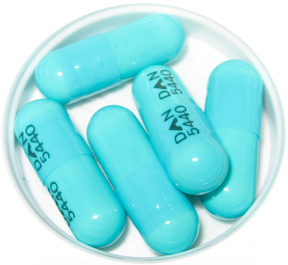The drug of Summer in the Southeast
Summer in the eastern United States means the return of tick-borne illnesses. For physicians in other parts of the country, you may not see as much tick-borne illness, but will certainly see patients returning from travel on the East Coast. In the Southeast, the main infection of concern is Rocky Mountain Spotted Fever (RMSF) caused by R. ricketsii which is carried by the Dermacenter (dog) tick. In the Northeast, Lyme disease prevails, caused by the spirochete B. burgdorferi, carried by the Ixodes (deer) tick. The treatment for both diseases is the same: doxycycline. Here is a look at doxycycline and its plethora of uses.
How it Works
Doxycycline is a bacteriostatic antibiotic in the tetracycline class. It binds to the small subunit of the bacterial ribosome, inhibiting protein synthesis.
Major Indications
Doxycycline has a host of FDA-approved indications that cover common infections such as chlamydia, pelvic inflammatory disease (when used with ceftriaxone), epididymitis, and community acquired atypical pneumonia. It is also FDA-approved for use as malaria prophylaxis, and for the treatment of tick-borne rickettsial diseases (RMSF, anaplasmosis/ehrlichiosis), tularemia, brucellosis, Q fever, gruanuloma inguinale (donovanosis), cholera, anthrax, and Y. pestis (plague).
Doxycycline is also commonly used off-label for a number of other infections, including: Lyme disease, community acquired MRSA skin infections, and malaria treatment.
Notable History
Doxycycline was developed by Pfizer in the early 1960s as a semi-synthetic antibiotic, a modification of naturally occurring molecules in the tetracycline class. The drug received FDA approval in 1967.
Recently In The News
The FDA reported a shortage of doxycycline in early 2013 due to “increased demand and manufacturing issues”. The cost of the drug, which had previously been on many four dollar lists, shot up. There is no longer a shortage but the drug has not yet made its way back onto the Walmart or Target four dollar lists.
Dosing
The dose of doxycycline is most often 100mg BID, and the length of treatment varies by indication. There are no dosing adjustments for renal/hepatic failure, or for geriatric patients. For MRSA skin and soft tissue infections, the treatment is for 5-10 days. For chlamydial infections, the duration is less than seven days. For Lyme disease, 10-21 days are recommended. For malaria prophylaxis, treatment should begin 1-2 days prior to travel, and continue for four weeks after leaving the endemic area. For RMSF, the treatment course is 5-7 days, or longer for complicated disease. Treatment of anaplasmosis/ehrlichiosis is for 10-14 days . Doxycycline can be given IV or PO. It has high oral bioavailability, on the order of 80-95%, though absorption is reduced if it is taken with a meal.
Cost
Prices vary by manufacturer and by form. At Walgreens, a one week course of 100mg doxycycline monohydrate capsules BID costs $40, while the tablet form costs $200. So pay close attention to your prescription to make sure patients receive a form they can afford!
REFERENCES
1. CDC Health Alert Network. Nationwide shortage of doxycycline: Resources for Providers and recommendations for patient care. CDC Health Alert Network Web site. http://emergency.cdc.gov/han/han00349.asp. Published 06/12/2013. Updated 2013. Accessed 01/05/15.
2. Food and Drug Administration. FDA drug shortages. http://www.accessdata.fda.gov/scripts/drugshortages/default.cfm. Updated 2015. Accessed 01/05/15.
3. Center for Disease Control. Rocky Mountain Spotted Fever (RMSF) symptoms, diagnosis, and treatment. http://www.cdc.gov/rmsf/symptoms/. Published 11/04/2010. Updated 2013. Accessed 01/05/15.
4. Lexicomp Online. Doxycycline: Drug information. UpTpDate Web site. Accessed 01/05/15.
5. Agwuh KN, MacGowan A. Pharmacokinetics and pharmacodynamics of the tetracyclines including glycylcyclines. J Antimicrob Chemother. 2006;58(2):256-265.



